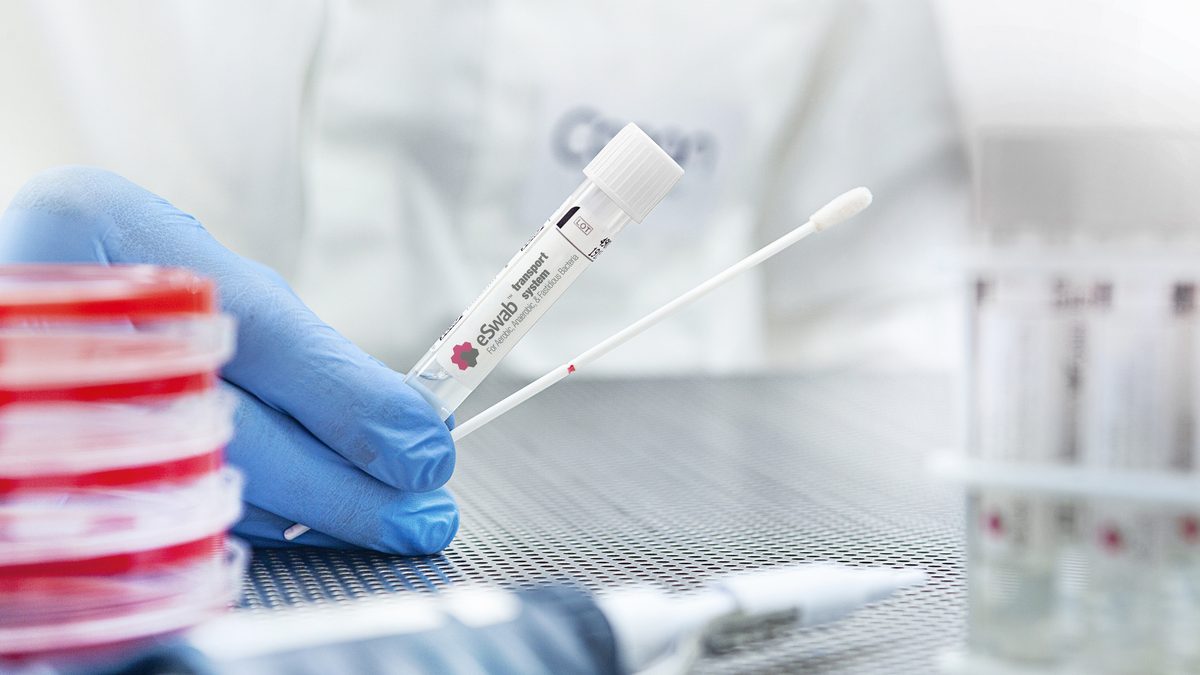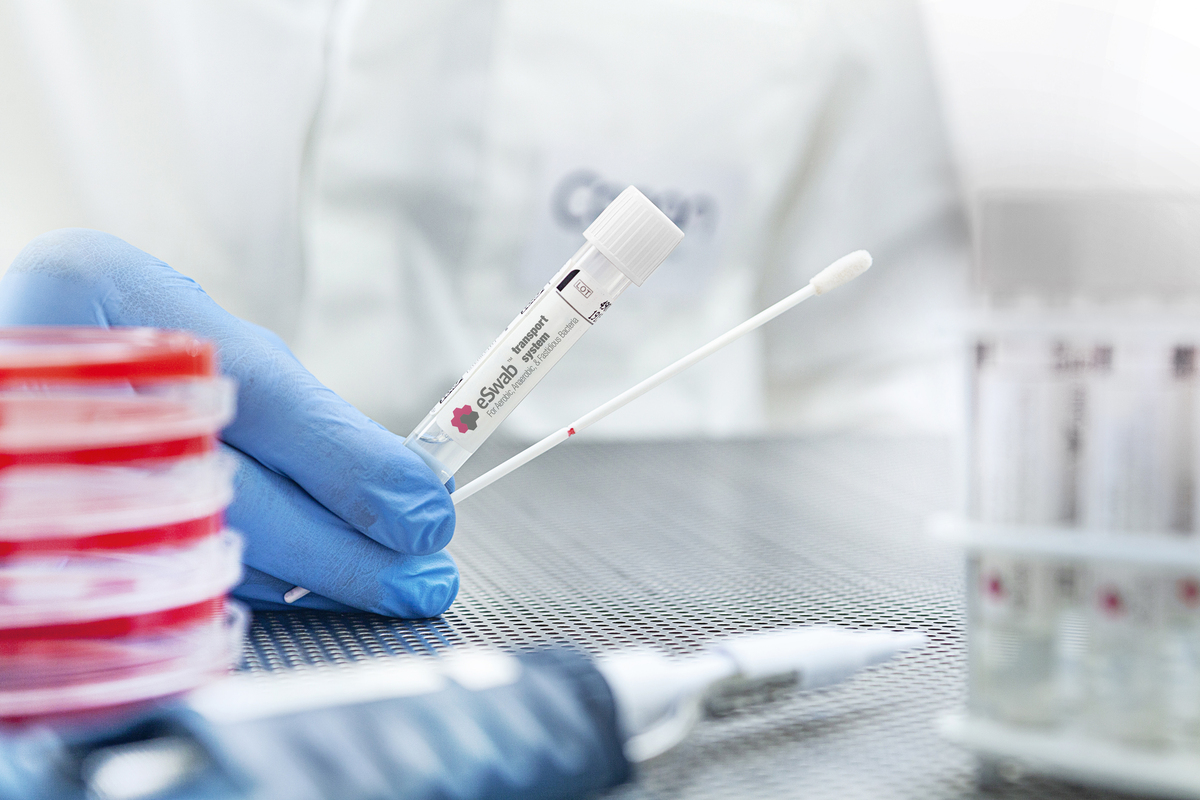Geoff Orbell
Sometimes knowing which gel swab to use for a given sample type or pathogen can be confusing. ESwab® are quickly becoming popular in veterinary medicine as they are extremely versatile and can be used for a variety of cultures including:
· Aerobic and anaerobic culture
· Fastidious bacteria e.g. Nocardia sp., rapidly growing Mycobacteria and Chlamydiaceae
· Gram stains
· Fungal culture, including dermatophytes
· Virology
· Molecular testing
· Joint fluid culture
· Fresh tissue cultures
What are they and how do I use them?
Rather than a gel media, ESwab® come with a liquid Amies culture media, which maintains pathogen viability for culture for up to 48 hours at room or refrigerator temperature. Samples for molecular testing remain viable for up to five days.
The swab itself is flocked (nylon fibre brush) and when placed into the liquid medium, over 90% of the patient specimen elutes into the liquid.*
After the swab has been used for sampling, the swab is immersed in the liquid media and the handle broken at the level of the cap, which is then screwed on to secure the sample.
Since ESwab® provides a homogenous liquid sample (after elution), multiple tests can be run off the one sample.

Fresh tissue skin biopsies
Where ESwab® really come into their own are with fresh tissue biopsies, as it is very difficult to extract solid tissue from the gel in gel swabs for culture at the laboratory. Previously, fresh tissue biopsies for culture were transported in a sterile container wrapped in a sterile saline-soaked surgical swab but they could still dry out during transport.
Fresh tissue skin biopsies require special treatment as they are prone to contamination by commensals. Unlike skin biopsies for histology, biopsy sites for fresh tissue culture should be clipped and surgically scrubbed. This may mean that biopsies for histology are taken first.
Any ulcerated areas or fistulae should be avoided, and the biopsies taken adjacent to these areas and as deep as possible using a 6 or 8mm biopsy punch, or incisional biopsy if the lesion is subcutaneous.
Using a sterile needle or instrument, the biopsy should be elevated, removed and placed onto a sterile surface. The epidermis still needs to be removed to minimise contaminants. This is most easily performed by placing the biopsy on its side on the sterile surface and using a new scalpel blade to cut the epidermis from the rest of the biopsy.
The remaining fresh tissue can then be placed into the liquid media of the ESwab® with the swab itself removed.
Where can I get ESwab® from?
ESwab® are available via the online shop on our website.
Although ESwab® are more expensive than standard gel swabs, they have a similar shelf-life and can still be stored at room temperature, but their versatility and ease of use makes them easily justified for almost all applications.
* https://www.copanusa.com/faqs/eswab/
Image thanks to Copanusa.com

